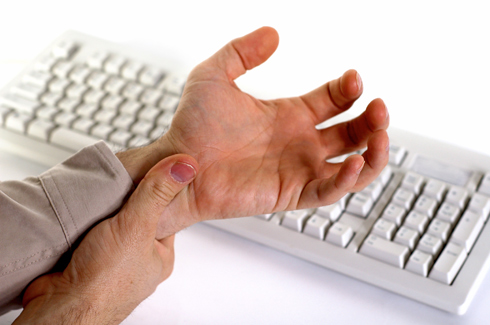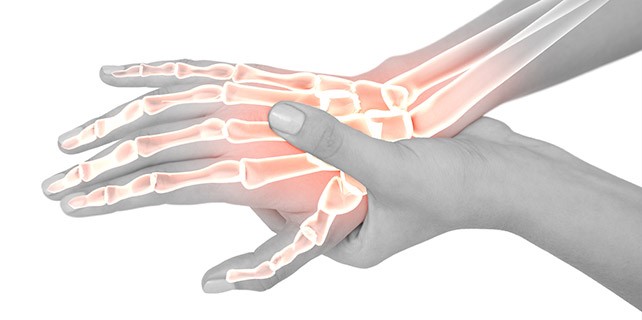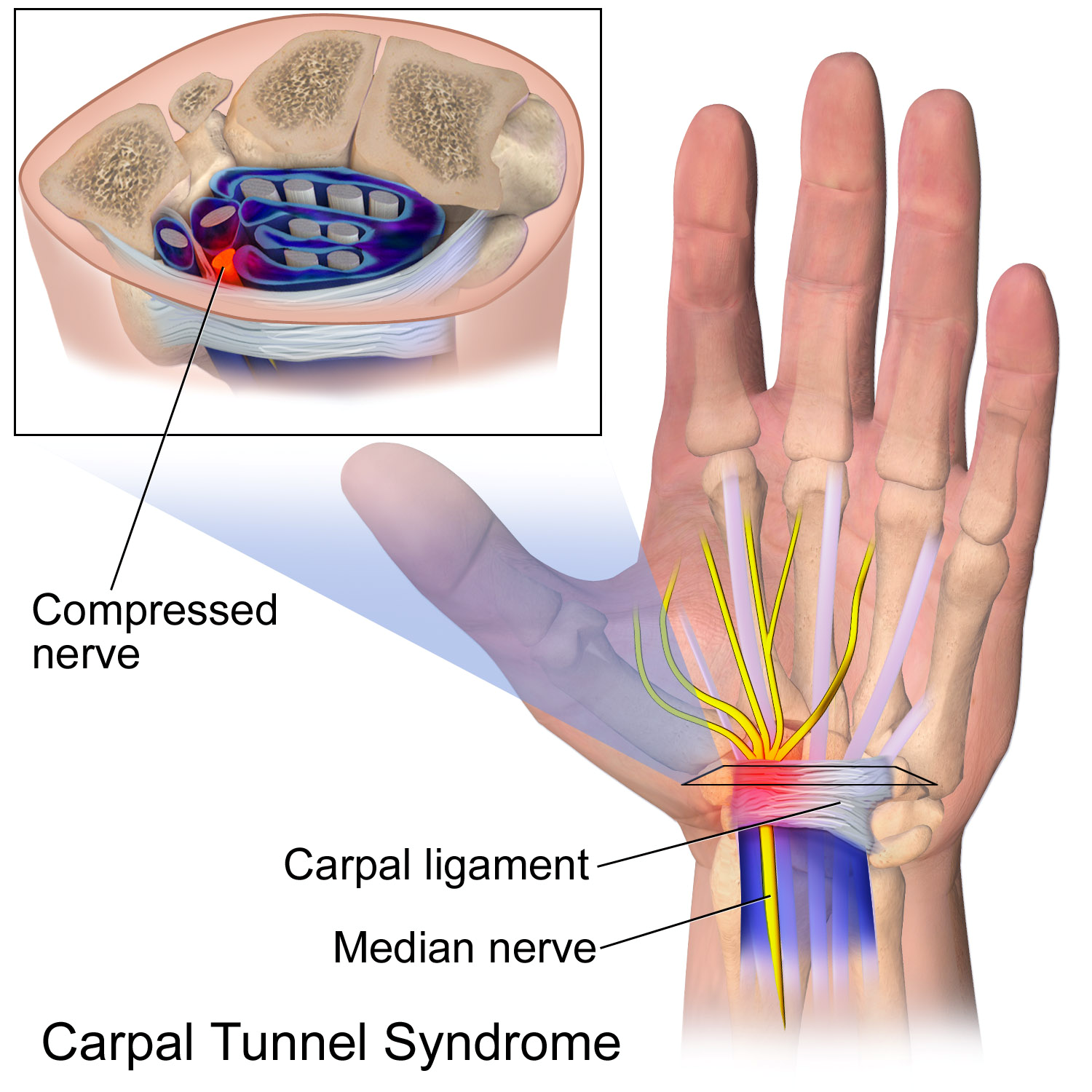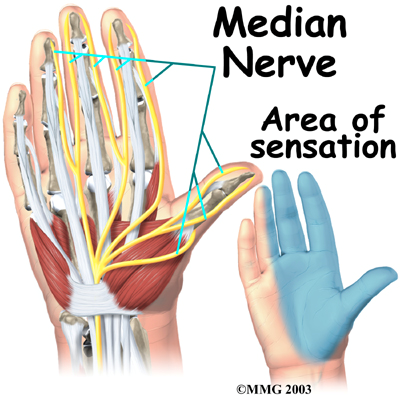Carpal Tunnel Syndrome
Are you experiencing pain or weakness in your fingers? Was there a time when you accidentally dropped an object while you’re holding it? Have you felt a tingling sensation or numbness running through your fingers? If you haven’t slept on your hands the night before it occurred, nor haven’t been diagnosed with arthritis, then, you might have a condition called Carpal Tunnel Syndrome.
Tingling or numbness in your hand & wrist is one of the things you can easily shrug off as just uneasiness. However, after a few days, you get a sharp pain originating from your wrist moving up to your shoulder. This pain is caused by the progressive compression of the median nerve in the wrist which results in Carpal tunnel syndrome. The median nerve is responsible for the movement of the fingers & thumb as well as controlling sensation to the palm side. This condition affects about 75 million people worldwide.


What is Carpal Tunnel Syndrome?
The term “Carpal Tunnel Syndrome” (CTS) was definitively explained and described in the years post-World War II. Prior to that, most patients with signs and symptoms of CTS were diagnosed as having Brachial Plexus or Median Nerve Compression.
Random House Dictionary describes CTS as a “disorder of the wrist and hand characterized by pain, tingling, and muscular weakness, caused by pressure on the median nerve in the wrist area.”
How Does Carpal Tunnel Syndrome Happen?
When the nerves in the carpal tunnel becomes irritated or compressed, Carpal Tunnel Syndrome occurs. The nerve compression and irritation is the result of different trauma mechanisms such as infection of the surrounding tendons or ligaments, arthritis, wrist fractures and dislocations, as well repetitive and intensive manual work such as typing on the computer keyboard for long hours.
Carpal Tunnel Anatomy
To fully understand Carpal Tunnel Syndrome, let us first take a look at the photo on the right.
The tunnel located at the center of the wrist (colored in purple-black) is formed between tendons, ligaments and bones from the arm to the hands. It serves as a ‘passageway’ of the nerves, hence, called the ‘carpal tunnel’.
The median nerve (yellow-colored structure) passes through the tunnel and serves as the ‘communicator’, like an electrical wiring network, providing sensations to the thumb and nearby fingers (see photo about median nerve’s area of sensation). This nerve also controls the muscles in the palm, allowing them to move.
Carpal Tunnel Q&A
What Causes Carpal Tunnel Syndrome?
This condition is not caused by a problem arising from the median nerve itself but by an increase in pressure on it & the Carpal tunnel tendon. Some of the causes include:
- Your Carpal tunnel being simply small due to congenital predisposition, making women more likely having this disorder because they naturally have a smaller Carpal tunnel.
- Use of vibrating hand tools causing trauma to the wrist and in return causing swelling.
- Hypothyroidism & rheumatoid arthritis.
- In rare cases, fluid retention during menopause or even having a tumor in the canal.
How can I know I have Carpal Tunnel Syndrome?
Other than the tingling & numbness you will experience frequent burning in the palms & hands. After sleeping you may also wake up feeling your fingers as swollen.
In the advanced stage of Carpal Tunnel Syndrome, you may experience a decreased grip strength. This may lead to difficulty in forming a fist or grasping objects.
How can I tell if I am at higher risk of developing Carpal Tunnel Syndrome?
- As discussed above, using vibrating tools among other equipment can play a significant role in causing swelling to your wrists due to overworking them. Therefore people in the assembly industries such as fish packaging, manufacturing, carpentry, etc. are more likely to develop this condition.
- Also for women they are three times more likely to develop this syndrome than men due to their small canal.
- If one has a metabolic disorder such as diabetes, then you are at a bigger risk. This is because such disorders affect your body’s nerves making them prone to compression.
- It is also important to note that Carpal Tunnel Syndrome occurs mostly in adults.
Definitive Symptoms To Carpal Tunnel Syndrome
Arthritis increases the risk for CTS and its symptoms can be very similar to Carpal Tunnel Syndrome. To prevent confusion, the table below provides some unique symptoms of CTS in contrast to Arthritis.


Differences of Symptoms Between CTS and Arthritis
Carpal Tunnel Syndrome
- Pain/ numbness/ tingling in the thumb, index finger, and middle finger (little finger or pinky usually not affected)
- Only one hand or the dominant hand is usually affected
- Weakness, sometimes causing loss of strength in gripping in the affected hand
- Joints hurt but not swell too much externally
- Shooting pains on the forearm, wrist, or hand
Arthritis
- Pain/ numbness/ tingling usually affects all finger joints
- Symptoms mostly occur on both sides of the body
- Swelling of the affected area
- Joints sometimes balloon up and feel hot
- Stiffness or deformities on the affected area
Carpal Tunnel Syndrome like arthritis, or any other forms of hand-wrist related injuries might interfere with hand strength, mobility, and sensation. It can also cause lots of discomfort as well as a decrease in hand function.
Best Treatments for Carpal Tunnel Syndrome

Like all illnesses, early diagnosis & treatment is key to prevention of worsening of this syndrome. While trying to check whether you have this condition, the doctor checks the feeling, appearance & strength of your wrists, hands, arms, shoulders & neck. He/she may also carry out blood and nerve tests.
If your signs haven’t progressed too far, you can treat Carpal Tunnel Syndrome at home through the doctor’s instructions. You may do the following;
- Ensure that you rest your wrists for longer periods in between activities needing your hands.
- Take Non-steroidal anti-inflammatory drugs such as aspirin & ibrufen to help get rid of pain and swelling
- Ice your wrists periodically probably for 10 -15 minutes 1 or 2 times in an hour.
- Make an effort of wearing a wrist splint while you sleep to take pressure off the median nerve.
- Finally, you can also do some stretching and strengthening exercises on your wrist and arm.
In case the Carpal Tunnel Syndrome has progressed you can be treated using surgery i.e. Carpal Tunnel release. This is where the band of tissues around your wrist is severed. Currently, there are two surgeries; the open release surgery and the Endoscopic surgery, which is the most efficient of the two.
After surgery, the likelihood of Carpal Tunnel Syndrome recurring is rare. However, you should follow your doctor’s instructions, ensure you keep healthy and exercise your wrists more often to be on the safe side.
Other treatments involve injection of corticosteroids into the carpal tunnel. If the underlying disease is the cause of CTS such as an underactive thyroid (hypothyroidism), or rheumatoid arthritis, the treatment of these diseases may relieve symptoms.
If you suspect that you have symptoms similar to that of carpal tunnel syndrome, and want to know more about the treatments, visit https://www.pegasuspain.com/pain-treatments-dallas/ or book an appointment at one of our Dallas/Fort Worth area pain treatment centers today.
References:
- Luchetti, Riccardo; Amadio, Peter C. Carpal Tunnel Syndrome. 2007 Berlin: Springer. pp. 3–9, 28. ISBN 978-3-540-22387-0.
- carpal tunnel syndrome. (n.d.). Dictionary.com Unabridged. Retrieved August 30, 2016 from Dictionary.com website https://www.dictionary.com/browse/carpal–tunnel–syndrome
- Pfeffer GB1, Gelberman RH, Boyes JH, Rydevik B. The history of carpal tunnel syndrome. 1988 Boston: Pubmed. PMID: 3283274 https://www.ncbi.nlm.nih.gov/pubmed/3283274
- Sternbach, G. 1999. “The Carpal Tunnel Syndrome”. Journal of Emergency Medicine. https://www.ncbi.nlm.nih.gov/pubmed/10338251
- Katz, Jeffrey N.; Simmons, Barry P. 2002. Carpal Tunnel Syndrome. New England Journal of Medicine. https://www.ncbi.nlm.nih.gov/pubmed/12050342
- “Image on Median Nerve and Area of Sensation”. https://www.emedmd.com/content/diseases-peripheral-nerves
- Blausen.com staff. “Image on Median Nerve Anatomy”. Blausen gallery 2014. Wikiversity Journal of Medicine. DOI:10.15347/wjm/2014.010. ISSN 20018762. https://commons.wikimedia.org/wiki/File%3ACarpal_Tunnel_Syndrome.png
